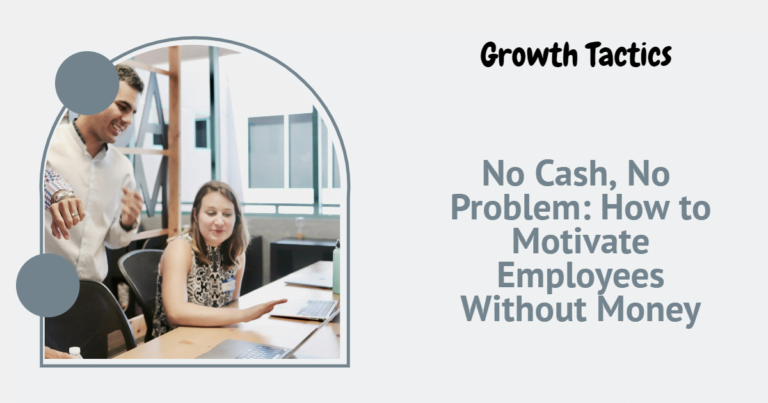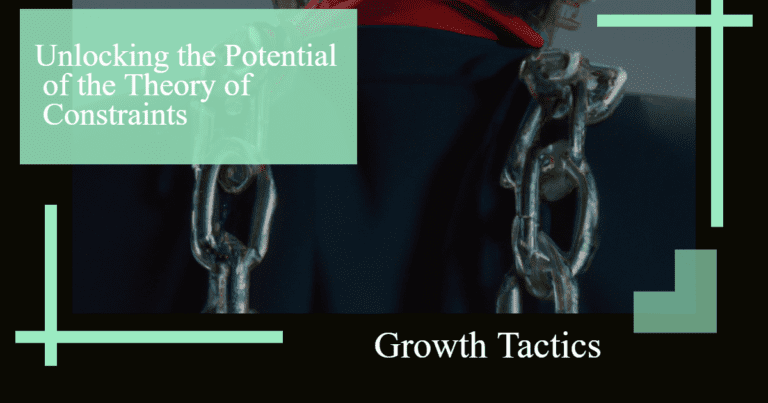Imagine a mentor who could inspire, engage, and impart wisdom through the simple act of telling stories. Think about the impact they could have on a mentee’s journey.
Effective mentorship is more critical than ever, as it provides guidance, support, and valuable insights that can shape one’s professional and personal growth. One of the most powerful tools a mentor can wield is storytelling. This article will explore how you can become a better mentor through storytelling techniques.
Jump To Section
The Power of Storytelling in Mentoring
Emotional Connection
Stories have the unique ability to create a strong emotional bond between the storyteller and the listener. When you share a story, you invite your mentee into your world, allowing them to experience your struggles, triumphs, and everything in between. This emotional connection builds trust and makes your guidance more impactful.
Increased Engagement
Let’s face it, lectures can be dull. Stories, on the other hand, captivate attention. By weaving lessons into narratives, you can keep your mentee engaged and interested in the conversation. A well-told story can transform a mundane discussion into an exciting and memorable experience.
Simplifying Complex Concepts
Stories can simplify complex ideas, making them easier to grasp. For instance, explaining the concept of resilience could be abstract and theoretical, but sharing a personal story about overcoming obstacles can make it tangible and relatable for your mentee.
Retention of Information
People tend to remember stories better than plain facts and figures. When you embed essential lessons within a narrative framework, your mentee is more likely to retain that information and apply it in their life.
Key Storytelling Techniques for Effective Mentorship
Know Your Audience
Before you can tell an effective story, you need to understand your mentee’s background, interests, and goals. Tailor your stories to align with their experiences and aspirations, ensuring they find relevance in what you share. Forming a connection with your mentee allows your stories to resonate on a deeper level, making your mentorship impactful.
Use Personal Anecdotes
Personal stories are powerful because they are authentic. Sharing your real-life experiences, both successes and failures, makes you more relatable and human. It shows that you’ve walked the path and learned valuable lessons along the way. These anecdotes create a sense of trust and transparency, demonstrating that even mentors face challenges and grow from them.
Structure Your Story Properly
A well-structured story has a clear introduction, conflict, resolution, and takeaway. This structure helps to keep your mentees engaged and ensures they can follow the narrative flow. By organizing your stories this way, you provide a roadmap that highlights the key learning points and guides your mentee through your experiences effortlessly.
Be Authentic and Vulnerable
Authenticity and vulnerability build trust. Don’t be afraid to share moments of weakness or failure. These stories often carry the most profound lessons and show that it’s okay to make mistakes. When you reveal your own vulnerabilities, you not only become more approachable but also encourage your mentee to open up about their own struggles.
Use Visual and Sensory Details
Incorporate vivid imagery and sensory details when you use storytelling to make stories come alive. Describe sights, sounds, smells, and feelings to help your mentee visualize the scenario. Sensory-rich storytelling immerses your mentee in the experience, making the lessons more memorable and impactful.
Incorporate Humor
Light humor can make your stories more engaging and relatable. However, ensure that the humor is appropriate and doesn’t overshadow the main message. Humor can break the ice, ease tension, and make difficult subjects more digestible, enhancing the overall storytelling experience.
Adjust Based on Feedback
Pay attention to your mentee’s reactions and feedback when you use stories. Adjust your storytelling style and content based on their responses to ensure that your stories resonate with them. Active listening and adapting to feedback not only improve the quality of your mentorship but also show your commitment to your mentee’s growth.
Practical Steps to Implement Storytelling in Mentorship
Identify Relevant Stories
Choose stories that are relevant to your mentee’s current situation and challenges. Align your stories with their goals to provide meaningful and practical insights that help mentees. For example, if your mentee is struggling with confidence in public speaking, share a story about a time when you faced a similar challenge and how you overcame it.
Practice Your Storytelling Skills
Rehearse your stories to ensure they are compelling and concise. Practice helps you to refine your delivery and timing, making your stories more impactful. Record yourself or share with a trusted friend for feedback. Focus on pacing, tone, and how you emphasize key points to keep your audience engaged.
Create a Storytelling Routine
Integrate storytelling into your regular mentoring sessions. Make it a habit to share a relevant story during each meeting to reinforce key lessons and concepts. This routine not only makes your sessions more engaging but also helps build a repository of practical wisdom that your mentee can draw upon.
Encourage Mentees to Share Their Stories
Foster a two-way storytelling environment between mentor and mentee. Encourage your mentees to share their own experiences and insights. This exchange enhances mutual learning and understanding. Acknowledge their stories and connect them to the lessons you share. This approach validates their experiences and demonstrates that mentorship is a collaborative journey.
Use Metaphors and Analogies
Employ metaphors and analogies to simplify complex topics or to make abstract concepts more relatable. This technique can help bridge the gap between theory and practice, making it easier for your mentee to grasp and remember key points. For example, comparing a project’s lifecycle to a marathon rather than a sprint can help illustrate the importance of pacing and endurance.
Incorporate Visual Aids
Visual aids such as charts, diagrams, or even simple drawings can enhance your storytelling. These aids help to illustrate your points more clearly and make your story more engaging. Visual representations can also serve as memory anchors, making it easier for your mentee to recall the lesson later on.
Tailor Stories to Different Learning Styles
Be mindful of your mentee’s preferred learning styles—whether they are visual, auditory, reading/writing, or kinesthetic learners. Adapting your storytelling approach to match their learning style can significantly improve the effectiveness of your mentorship. For instance, visual learners might appreciate stories accompanied by diagrams, while auditory learners might benefit more from expressive and varied vocal tones.
Make Ethical Considerations Clear
While sharing stories, make sure to highlight the ethical considerations and moral takeaways. This teaches your mentee about the importance of integrity and ethical behavior, reinforcing the idea that how results are achieved is just as important as the results themselves.
Use Varied Story Lengths and Types
Mix short anecdotes with longer, more detailed narratives. Sometimes a short, sharp story can drive home a quick piece of advice, while a longer story can provide in-depth lessons. Having a diverse storytelling repertoire keeps your mentee engaged and allows you to choose the right tool for each situation.
Follow Up with Reflection
After sharing a story, engage your mentee in reflection by asking questions about what they learned and how they can apply those lessons to their own experiences. This not only reinforces the story’s lessons but also encourages critical thinking and personal application.
By following these practical steps, you can effectively integrate storytelling into your mentorship, making your sessions more engaging, relatable, and impactful for your mentee.
Mastering Narrative Structure for Storytelling in Mentorship
To tell a compelling story, you need a solid narrative structure. Think of narrative structure as the backbone of your story; it helps organize your thoughts and ensures your story flows smoothly. Here, we’ll dive into some simple and popular narrative structures to make your storytelling impactful.
The Hero’s Journey
The Hero’s Journey is a classic narrative structure often seen in movies and novels. It’s engaging because it takes the listener on a journey filled with challenges, growth, and transformation. Here’s how you can use it in your mentorship sessions:
- The Call to Adventure: Start by describing a challenge or opportunity you or someone faced. For example, “I once had the chance to lead a new project, but it was outside my expertise.”
- Initial Struggles: Talk about the obstacles and feelings of doubt. “I felt overwhelmed and questioned my abilities.”
- Turning Point: Explain the moment of decision or action that changed everything. “I decided to seek advice and put in extra hours to learn new skills.”
- Growth and Learning: Highlight the lessons learned and growth experienced. Through persistent effort, I not only developed new skills but also gained confidence.
- Resolution: Conclude with how the challenge was overcome and the positive outcomes that followed. “The project was a success, and it opened new career opportunities for me.”
The Three-Act Structure
The Three-Act Structure is straightforward and widely used, making it super easy to implement. Here’s a simple breakdown:
- Act 1 – Setup: Introduce the main characters and the situation. “When I first started my career, I faced the challenge of adjusting to a new work culture.”
- Act 2 – Confrontation: Present the main conflict or problem. “I struggled with time management and felt stressed out.”
- Act 3 – Resolution: Show how the problem was resolved and the lessons learned. “By creating a structured schedule and prioritizing tasks, I managed to find a balance and improved my performance.”
Freytag’s Pyramid
Freytag’s Pyramid adds an extra layer of complexity but can be very effective. It includes five parts:
- Exposition: Provide background information. “Right after college, I took up my first job as a junior analyst.”
- Rising Action: Build up to the main conflict. “I noticed there were areas that I needed to address.”
- Climax: Reach the peak of the story, where the main action happens. “I enrolled in an advanced analytics course and took on additional projects to practice.”
- Falling Action: Describe the events following the climax. My skills improved, and I started gaining recognition from my peers and supervisors.
- Resolution: Conclude the story with the final outcome. “Eventually, I was promoted and began mentoring new analysts.”
Putting It All Together
These narrative structures help you organize your stories in a way that’s engaging and easy to follow. Pick the one that feels natural to you and fits the story you want to share. Customize it according to the situation and the message you want to convey. With practice, you’ll find that your stories not only captivate your mentees but also leave lasting impressions.
So next time you’re about to share an experience with your mentee, try using one of these structures. You’ll be amazed at how much more impactful your storytelling becomes!
Conclusion
Storytelling is a powerful tool that can transform your mentoring relationships. By building emotional connections, simplifying complex ideas, and enhancing engagement, stories can make your guidance more impactful and memorable. Start integrating storytelling into your mentoring sessions today, and watch your mentees thrive. Remember, the power of a well-told story can inspire, educate, and transform lives.








